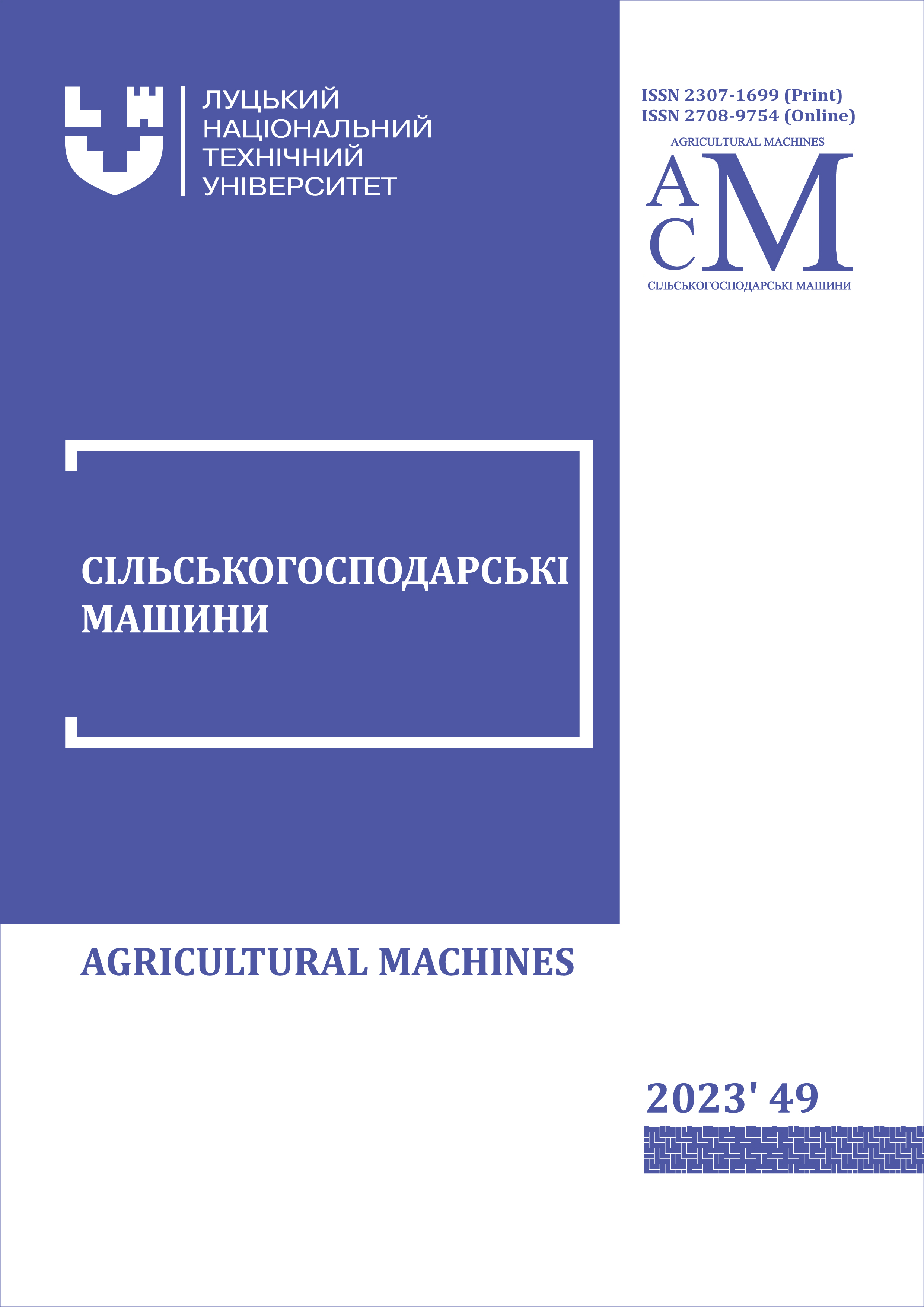MODELING THE TEMPERATURE FIELD IN THE SOIL MASSIF
Abstract
The ever-increasing cost of energy resources, especially fossil fuels, makes it necessary to find new ways of generating energy. In the field of energy and energy saving, new methods of energy production are being researched and developed. In particular, traditional production methods are being improved, resource-saving processes are being developed, equipment efficiency is being increased and renewable energy sources are being used. One effective method of saving fuel and protecting the environment is the widespread use of heat pumps. Heat pumps can play an important role in the use of renewable energy sources, especially in agriculture. The article presents the results of the study of the temperature field in the soil massif around the soil heat exchanger using a heat pump. An increase in heat productivity is ensured by reducing the temperature difference of the heat carrier in the soil heat exchanger and in the evaporator. Therefore, an additional heat source selected from the heat supply system is proposed. The reduction of the temperature range between the evaporator and the coolant from the soil heat exchanger is also influenced by: the temperature of the soil layers; the heat flow in the soil; the distance between the boreholes at which the energy potential of the soil mass is maintained. The process of adding (removing) heat from a low potential energy source is a function of time and space. The temperature field is formed from the geometric center – the axis of the borehole. A well and a low-potential heat source is a complex calculation object and is characterized by variable boundary conditions. Therefore, the solution of this problem is performed using an implicit difference scheme and a volume control method with a shifted grid. The article calculates the temperature field of multi-layered soil massifs with different coolant temperatures, taking into account the thermos-physical parameters of the soil around the borehole. This technique can also be used to predict the thermal regime of the soil, which makes it possible to control the accumulation of heat around the soil heat exchanger.
References
Босий, М. В., & Кузик, О. В. (2020). Ефективність циклу теплового насоса для теплопостачання (Heat pump cycle efficiency for heat supply). Центральноукраїнський науковий вісник. Технічні науки, 3(34), 136–142. https://doi.org/10.32515/2664-262X.2020.3(34).136-142
Голуб, Г. А., & Кепко, О. І. (2002). Математична модель теплонасосної системи теплопостачання споруд закритого ґрунту (Mathematical model of heat pump system of heat supply of closed ground structures). Вісник Харківського державного технічного університету сільського господарства, 10, 275-278.
Горобець, В. Г., & Яценко, О. В. (2014). Розробка системи опалення та математичної моделі процесів тепло- і масопереносу в теплицях з використанням альтернативних джерел енергії (Development of a heating system and a mathematical model of heat and mass transfer processes in greenhouses using alternative energy sources). Енергетика і автоматика, 1, 25-37.
Зур’ян, О. В., & Олійніченко, В. Г. (2021). Гідротермальна система отримання теплової енергії, фізичні процеси, ефективність (Hydrothermal system of thermal energy, physical processes, efficiency). Вісник Вінницького політехнічного інституту. Енергетика, електротехніка та електромеханіка, 4, 40-46. https://doi.org/10.31649/1997-9266-2021-157-4-40-46
Нікулішин, В. О., & Височин, В. В. (2014). Теплові насоси та кондиціонери (Heat pumps and air conditioners). Одеса: Медіа-Арт.
Ткаченко, С. Й., & Остапенко, О. П. (2009). Парокомпресійні теплонасосні установки в системах теплопостачання (Steam compression heat pump installations in heat supply systems). Вінниця: ВНТУ.
Ткачук, К. К. (2015). Перспективи застосування теплових насосів в Україні (The prospect of heat pumps using in Ukraine). Вісник Національного технічного університету України «Київський політехнічний інститут», 27, 144-153.











